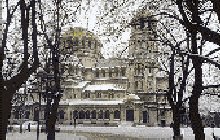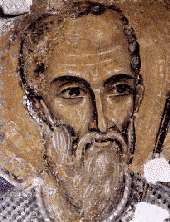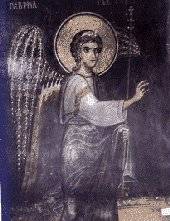|
|
| |
BULGARIA
SOFIA
“ Ever growing, never ageing"- this is the motto inscribed on the coat-of-arms of the Bulgarian capital – the city of Sofia.
Late last century Sofia totalled only 12,000 residents. In 1946 – 516,000 residents, and today - some 1,200,000 residents, i.e. 14 % of the country’s population. Drawing a balance, one sees that in the past 100 years the population multiplied 100 times.
This is one of the oldest towns not only in Bulgaria but also throughout Europe. “Sofia” is the fifth name of the town – following Serdica, Ulpia Serdica, Sredetz, and Triaditza. There are data on Serdica’s existence of 5,000 years ago, and the earliest written data for residents on the lands of Serdica date back to the middle of the first millennium BC. The history of today’s city of Sofia started with the founding of the Thracian town of Sardonopolis. “Serdica” (the emphasis being on the last syllable) is the oldest name of the town we know. The name originates from “Serdi” – one of the 22 Thracian tribes forming the numerous Thracian people.
Located in the fertile Sofia valley, in the very centre of the Balkan Peninsula, on the strategic crossroads between East and West, the town was a much-attractive centre for many tribes and nations, travellers and conquerors. This was why it repeatedly experienced periods of upheaval and decay, but always managed to revive anew from the ashes – like the Phoenix bird, even more magnificent and powerful.
Here people venerated especially strongly god Asclepius (or Aesculapius) since on the territory of Serdica there were numerous warm mineral water sources, called Thermi.
Serdica reached its peak under Emperor Constantine the Great (306 – 337 AD).
In 6 and 7 centuries Slavonic tribes started settling in the Balkans and in the Sofia plain.
In 809 AD khan Krum besieged and overtook Serdica. Ever since the town linked its fate for good with the Bulgarian state.
In late 9 c. – under the reign of tsar Boris the town assumed the Slavonic name of Sredetz – meaning “in the middle” of the Balkan Peninsula.
In 1194 AD the town of Sredetz joined the confines of the Second Bulgarian kingdom. There followed a period of long-lasting peace and upheaval of the material and spiritual culture. In Medieval Sredetz a literary school was set up with the “St. Sophia” Church, while in 1259 AD the greatest work of the Bulgarian Middle Ages came to life – the Boyana Church murals.
At the end of 14 c. AD the town of Sredetz assumed the name Sofia. This name was linked with the biggest for that time and most beautiful “St. Sophia” Church, The name is first mentioned in a charter by Tsar Ivan Shishman (1371 – 1393 AD).
During the Ottoman rule the town was the capital of the Rumelian beyler-bey office, encompassing almost all the territory of the Balkan Peninsula. Preserved from that age now are the “St. Petka Samardjiiska” Church (in the subway in front of TSUM, the “Sheraton” hotel”) and the “St. Spas” (Ascension) Church (within the architectural ensemble of “Bulbank”).

An important fact of Sofia’s history was its proclamation for capital of Bulgaria after the liberation from Ottoman domination (on a proposal by the prominent public figure Marin Drinov) with a Decree by the first Bulgarian prince Alexander Battenberg on April 3, 1879.
Rapidly the city's image changed from an Oriental, to a European. Today many streets, buildings, parks, and even whole neighborhoods preserve the architectural style from the turn of the century. Between 1879 and 1939, the population of Sofia grew from 20 000 to 300 000, while today 1 250 000 people live in Sofia.
PLACES OF INTEREST
 Alexander Nevski Cathedral
Completed in 1912 in honour of the Russian casualties of the 1877-78 War of Liberation from Ottoman Rule. Gold-domed, it is the finest piece of architecture in the Balkans. Craftsmen and artists from 6 countries worked on the five-aisle church in the course of 30 years and created real masterpieces of icons, frescoes, murals and huge chandeliers. The interior decoration, made of Italian marble. Egyptian alabaster, Brazilian onyx, gold, mosaics embodies the spirit of the finest Eastern Orthodox traditions. A superb collection of icons - the best in Bulgaria - can also be seen in the Crypt.

Rotunda of St. George
A C4 brick building in the courtyard behind the Sheraton Hotel, adorned with finely preserved early medieval frescoes. There are also remains of a C2 street and other Byzantine ruins.
St. Sofia Church
The 4th-6th century basilica was built during the reign of Justinian. It has survived intact with 1600- year-old mosaic details and towards the end of the C14 gave the city its name. Beside the wall of the church is the Tomb of the Unknown Soldier. Nearby is the grave of the national poet and writer Ivan Vazov, marked by an engraved boulder.
The National Palace of Culture
The biggest Congress Centre in the Balkans. It is located in the centre of the city and faces the Vitosha Mountain.
Boyana
A suburb at the foot of Mount Vitosha, notable for the BOYANA CHURCH, built in the C11. Frescoes are claimed to be among the oldest and most interesting examples of East European Medieval art. Like Rila Monastery, the BOYANA CHURCH has been listed by UNESCO as a part of the world s cultural heritage.

 |
|
|
Festivals and Fairs
The Great Koprivshtitza Folklore Festival
The Great Koprivshtitza Folklore Festival is Bulgaria's largest gathering of traditional musicians and singers and is a cross between a pop festival and a medieval fair. It is a sight that knows no equal: thousands of musicians and singers making the hillside above the picturesque village of Koprivshtitza their home for a few days. Coupled with this you have the colourful stalls of the traders and the thousands of visitors who come for the festival.
This is Bulgarian music as it was always played, played by the ancestors of those who first played it. But perhaps it is what happens on the periphery that is the most authentic. Strolling players or soloists, simply playing for the sheer enjoyment. forming new bonds with other musicians or just letting their music ring out over the hillside.
The Bourgas International Folk Festival
The Bourgas International Folk Festival, held annually, attracts a host of Bulgarian and international artists and is held in the second half of August.
The Kazanluk Festival
The Kazanluk Festival of the Roses is held annually in early June, and has grown from a local to an international event. Not only are the roses, Kazanluk's main industry, in full flower. but the town itself blossoms while visitors enjoy the "Rose Picnic" and all the fun of a folklore festival, with its costumes, songs and dance. Should you still have the energy left, you can always visit the old factories where the rose oil is extracted.
St. Trifon's Day
In the agricultural calendar, St. Trifon's Day celebrates the pruning of the vines, and is held on February 14.
Kukerov Den
On the first Sunday before Lent, Kukerov Den celebrates the start of the agricultural year, and all over Bulgaria you can witness processions led by the dancing. leaping Kukeri dressed in colourful masks and costumes.
Baba Marta
Baba Marta is celebrated on March 1 when peasant house-holds brush out the winter cobwebs with a traditional spring clean. and people offer each other tokens of good luck called martenitsas.
Kukeri
Like western countries. the Bulgarian calendar is dotted with important feast days and festivals. The festival of the Kukeri re-enacts ancient surovaki rites to ward off evil spirits and Kukeri fertility rites. Although only held once every five years, it brings together dancers from all over Bulgaria in a rainbow of colours and styles.
St. Lazarus Day
Lazaruvane is also celebrated in spring on St. Lazarus Day, and here village girls considered fit for marriage perform ritual songs and dances.
St. Konstantin and St. Elena Day
The coming of summer is traditionally celebrated on St. Konstantin and St. Elena Day on May 21, and in some of the remoter villages in the Stranzha hills fire dancing, dancing on heated coals, is still practised in celebration of summer's arrival. Ethnologists have suggested that this practice is directly descended from Dionysina rites of the ancient Thracian.
|